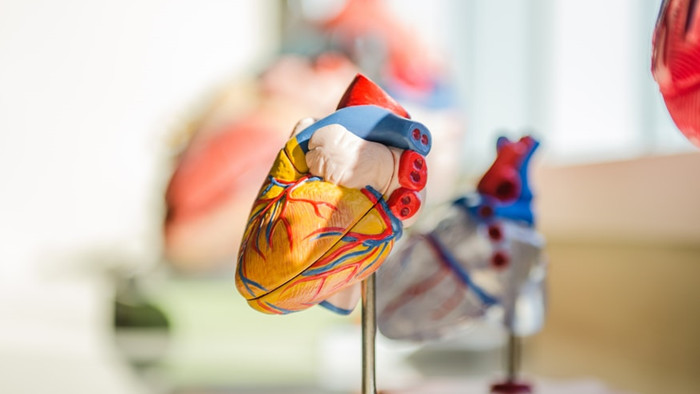Common materials and production of artificial blood vessels
Common materials and production of artificial blood vessels – Cheersonic
The composition of human arteries
Human arteries are composed of three layers of intima, media and adventitia. Blood vessels of different diameters and locations have different thicknesses of each layer. in:
The intima is in direct contact with the blood and consists of endothelial cells in a bed of connective tissue attached to the basement membrane. The endothelial cell layer prevents the activation of coagulation and complement factors, and inhibits the adhesion of leukocytes and platelets. It is also involved in the regulation of vasoconstriction expansion, growth and vascular remodeling.
The tunica media is the middle layer of the vessel wall and is mainly composed of smooth muscle cells (SMC), along with a layer of elastic tissue and a small amount of collagen. The medial layer helps blood vessels resist repeated expansion and contraction caused by physiological pulsations of blood flow and intraluminal pressure.
The adventitial layer is composed of loose connective tissue, mainly fibroblasts. When blood vessels are damaged, fibroblasts have the ability to repair the adventitia.

Among these three layers, the media layer SMC, collagen and elastin fibers mainly undertake the functions of ensuring the mechanical strength and elasticity of blood vessels.
Artificial blood vessel classification
According to the size of the caliber, artificial blood vessels are divided into three sizes: large, medium and small. Usually, those with a diameter of more than 10 mm are called large-caliber, those between 6 mm and 10 mm are medium-caliber, and those less than 6 mm are small-caliber.
The mechanical properties of the ideal stent material should match the natural artery as closely as possible, and the substitute material should be elastic, mechanically durable, degradable, and have good biocompatibility.
Materials for making artificial blood vessels
(1) Natural polymer materials: Natural polymer materials such as collagen, gelatin, sodium alginate, chitosan, etc., generally have the characteristics of non-toxicity, hydrophilicity, good cell affinity and biocompatibility, and are especially suitable for Preparation of artificial blood vessels. However, these natural polymer materials often have poor mechanical properties and need to be processed to meet the material requirements of artificial blood vessels;
(2) Synthetic polymer materials: polyester, polytetrafluoroethylene (PTFE), polyurethane (PU), polycaprolactone (PCL), polylactic acid-co-glycolic acid (PLGA), etc. have been used in the research and development of artificial blood vessels . Synthetic polymer materials have the advantages of controllable sources, high quality stability, simple processing and good mechanical properties. At present, the research and improvement of these traditional polymer materials is also one of the current hot topics;
(3) Animal-derived acellular matrix material: the same or different animal blood vessels or mesentery are processed into acellular matrix by enzyme treatment, ultrasonic or centrifugation technology, and then prepared into tissue engineering artificial blood vessels;
At present, large and medium-caliber artificial blood vessels prepared from artificial materials such as polyester, polytetrafluoroethylene, and natural silk have been used in clinical practice and have achieved satisfactory results; but so far, there is no artificial small-caliber (diameter <6 mm) artificial blood vessel. Vascular listing.
The main reasons are: the poor blood compatibility and anticoagulation performance of the material itself, when in contact with blood, fibrin and platelet deposition will be produced to varying degrees, resulting in lumen stenosis and vascular occlusion; due to the blood flow in the small vascular system The speed is slow and the blood pressure is low, and these non-degradable materials cannot support the adhesion and growth of endothelial cells, and the artificial blood vessels cannot be endothelialized as soon as possible after implantation, resulting in vascular stenosis and embolism, and the long-term patency rate of small-diameter artificial blood vessels cannot be guaranteed.
At present, the research on small-caliber vascular products is the focus and difficulty of scientific research of companies and universities.
Preparation technology of artificial blood vessel
(1) Biocoating technology: The ideal artificial blood vessel material should have the characteristics of anti-thrombosis, anti-platelet aggregation, good histocompatibility, and no inflammatory reaction. Improve the adhesion of vascular endothelial cells to the inner wall of vascular materials, enhance antithrombotic, anticoagulant, and improve long-term blood flow patency;
(2) Electrospinning technology: This technology has the advantages of simple equipment, relatively low cost, flexible control and other advantages, and is widely used in the research of vascular stent materials. Electrospinning technology utilizes the action of a high-voltage electrostatic field to form a charged jet stream of the material solution, which is stretched in the electric field, and finally receives a nanofiber layer or a microfiber layer that forms a non-woven state. This fiber layer has a structure similar to the extracellular matrix membrane of human tissue, and has the characteristics of high porosity, which is conducive to the adhesion and proliferation of autologous cells, and improves the biocompatibility of artificial blood vessels;
(3)Tissue engineering is an emerging interdisciplinary subject that provides a new approach for vascular transplantation from the perspective of regeneration. The method is to inoculate seed cells on natural or synthetic material scaffolds, and then construct tissue-engineered blood vessels that are close to living blood vessels in terms of morphology and function, and perform decellularization treatment before implantation to avoid the problem of immune rejection.
The article comes from Heyi Guangye Innovation Platform, author Du Fuchong
Cheersonic is the leading developer and manufacturer of ultrasonic coating systems for applying precise, thin film coatings to protect, strengthen or smooth surfaces on parts and components for the microelectronics/electronics, alternative energy, medical and industrial markets, including specialized glass applications in construction and automotive.
